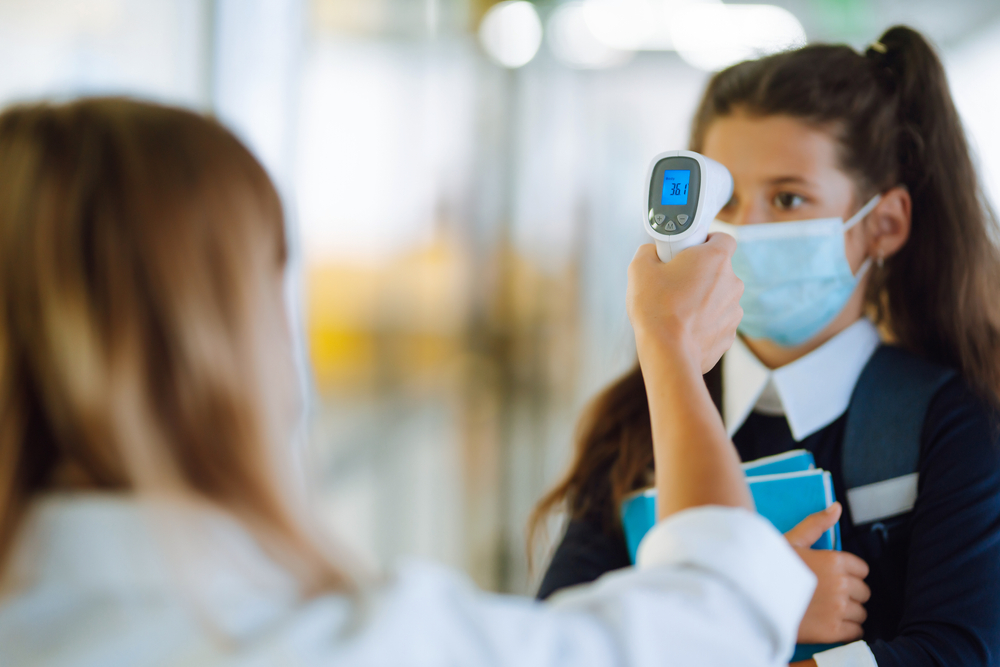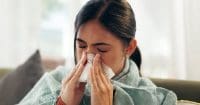Nationwide, a third of schools don’t have a nurse. At the end of 2023, about 50 RNs covered more than 150 schools in the Baltimore school system. Nurses attend to cuts and bruises, but also provide chronic care and case management for conditions like asthma, diabetes, and ADHD. Children can’t focus on learning if they can’t breathe or if their blood sugar is through the roof. But with one nurse to three schools—at anywhere from 500 to 1,200 students each—too many students fall through the cracks.
“I’m from Baltimore City, and School Health Nursing is close to my heart because I’ve walked the path of being a student in Baltimore City Schools,” said Christal White, BSN, RN. “I remember how important it was for the nurses to be present in the schools back then, and even more so now. There are schools here in desperate need of nurses.”
White is the nurse supervisor for School Health Nursing, a new program that aims to address the issue. It’s a collaboration among the Johns Hopkins School of Nursing and Schools of Nursing at Coppin State University and Morgan State University, where each university provides a nurse, training, and resources to care for students at five Baltimore City schools. We spoke with her to learn about the program.
Q&A with Christal White
How did you get here?
I started my career as a clinical tech, and worked for over 10 years in med-surg and surgery, the emergency department, and OB/GYN. I went on to earn an associate’s degree in nursing from the Community College of Baltimore County and earned my BSN from Western Governors University. Now, I’ve been a registered nurse for eight years, working in family practice, pediatrics, at the health department, and in school health.
School health is near to my heart because I’ve lived it. There were many times I received basic primary care at school as a student, and when I got older it was reassuring to know I could go to school and receive healthcare.
Tell us about School Health Nursing.
We’re trying to change the culture of school nurses, and build the expectation that there will be a nurse at school every day. That way, students will feel secure and parents will feel confident that children (and staff) are well cared for.
The program includes Johns Hopkins School of Nursing, Coppin State University, and Morgan State University, which provide nurses and resources to five schools each. The nurses and schools of the Johns Hopkins cohort are:
- Lois George, BSN, RN; Commodore John Rogers Elementary/Middle School
- Delphine Halle, BSN, RN; Fort Worthington Elementary/Middle School
- Natasha Monee Harris, RN, AA; Mount Royal Elementary/Middle School
- Nicole Mader, BSN, RN; William Paca Elementary/Middle School
- Lindsey Weer, BSN, RN; John Rurah Elementary/Middle School
I’m based in Wald Community Nursing and Outreach Center, but my feet are always on the ground—I’m in the schools almost every day. I like it that way because I want to show our school nurses that I’m here to support them.
We have experienced and new nurses among the staff, including some who came from an inpatient clinical setting. Turnover has been a big challenge for school nurses, but School Health Nursing is becoming a more attractive specialty offering comfortable pay, benefits, and predictable hours.
What is the status quo of school health?
There’s a nationwide shortage of school nurses, and Baltimore is no different. Our schools have been making do with a ratio of one nurse to three schools and nurses often don’t have the supplies they need—basic necessities like ice packs and [bandages], as well as pulse oximeters, blood pressure cuffs, and even printers.
Even the best nurses cannot focus on all the students that desperately need support at any one location if they are split between schools, and they’re not set up for success without the proper resources. We’ve been patching the shortage with support from contract nurses from nurse staffing agencies, but an environment with a shortage of permanent nurses and frequent turnover creates a recipe for kids with special needs and chronic conditions (like asthma, diabetes, and ADHD) to fall between the cracks. A lot of information wasn’t being documented. At one school there were only three or four cases of chronic asthma documented, but as our nurses settled in, they found twice and sometimes three times that number.
The administration and staff have been very receptive and grateful for the consistency School Health Nursing represents.
What are frequent challenges school nurses address in Baltimore City?
School nurses are there in case kids get scratches on a playground, but they’re also critical for case management. We keep emergency care plans, individualized health plans, student medications, and orders from providers that consist of but are not limited to daily procedures, medication administration, and diabetes care in the health suite.
Many children have chronic conditions and special needs, such as asthma, diabetes, and ADHD. Dental health has been a big challenge for uninsured children, and it can become a big issue if an infected tooth becomes septic. We’re able to refer them to care—like University of Maryland School of Dentistry, which sees uninsured children. But with the number of students who are in dire need of this type of care, we have been looking for additional resources.
Then, almost every school has at least one student with diabetes who requires regular assistance. These students visit the health suite two to three times a day for glucose monitoring, education, and carb control.
We advocate for our students and provide case management—if our student with diabetes comes in with a really high glucose reading before breakfast, we’re able to reach out to their parents and provider, and get them the help they need.
What improvements can you already see?
We’ve been blessed with great nurses who love what they do. We started occupying the school health suites in February 2024 and they have settled in and made the spaces their own.
They are a consistent presence in schools, which builds confidence among the administrators, staff, parents, and students that someone is there, at school, to provide for their health and wellbeing. They have already uncovered so many cases of students with chronic health conditions. That’s a big deal. With the relationships they’re developing and the understanding of the school and the students that they’re building, we can go into the next school year better prepared to care for the little people, who are the future—our future.
Schools are a critical touch point to provide care for young people. We’re continuing to build relationships, promote wellbeing among our students and school community, and encourage healthy habits that set up our youth for wellness.
Sydnee Logan, MA, is Brand and Public Relations Manager at Johns Hopkins School of Nursing.


















